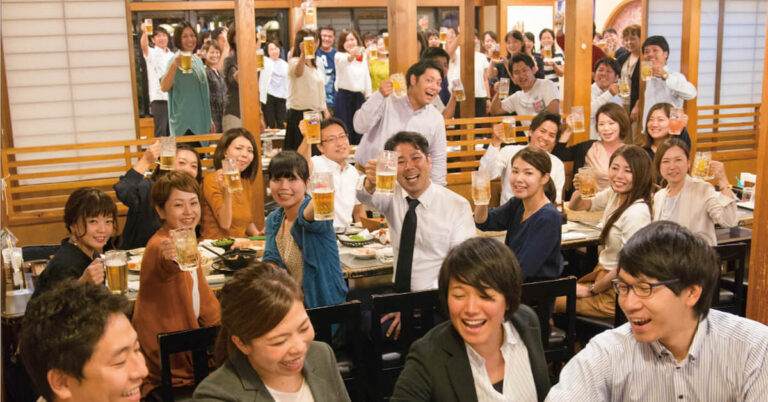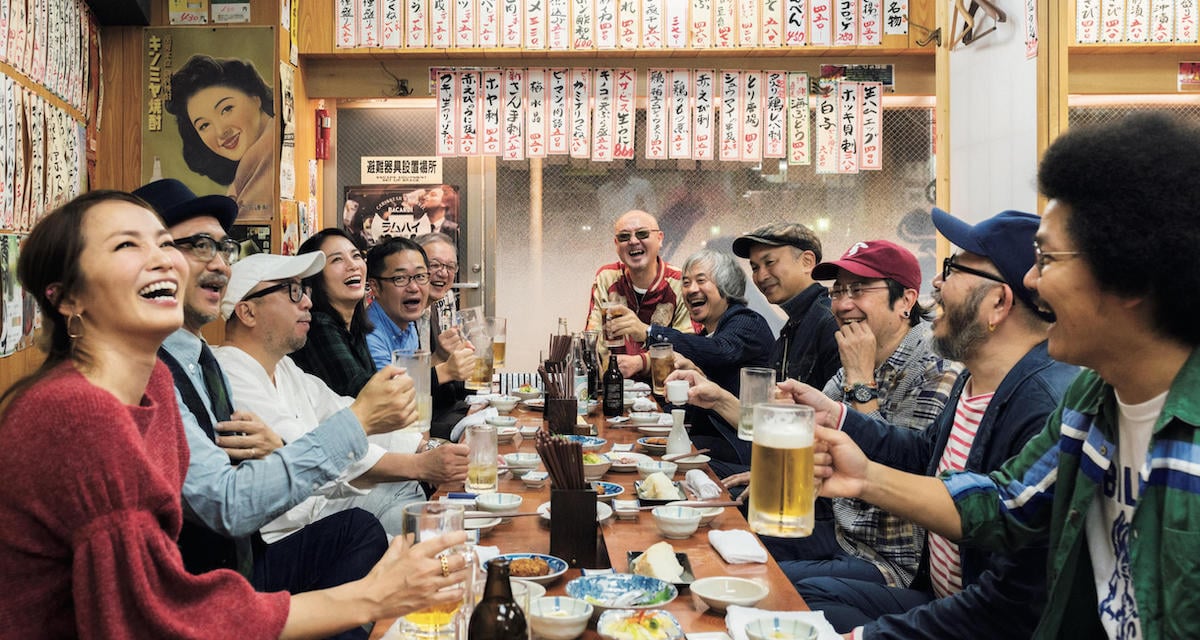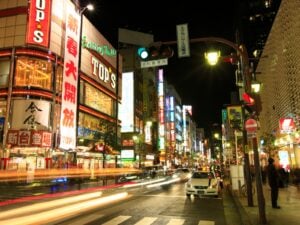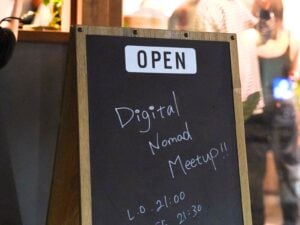
When you enter the realm of the Japanese workforce, get ready for a whole new level of workplace dynamics. It’s a world where maintaining a polished public persona (known as 表, omote) is the norm, meaning you won’t often witness people openly expressing annoyance or dissatisfaction with their colleagues’ decisions. But fear not! That’s where the magic of dinner parties (宴会, enkai) come into play.
These organized gatherings provide coworkers with a chance to let loose and engage in candid conversations, without worrying about disrupting the harmony (和, wa) of the office. It’s truly hard to convey just how palpable the shift is between the public and private faces here in Japan, but trust me, the contrast is striking. In this article, we’ll delve into what you can expect from a work dinner party and share some essential rules to follow. So, get ready to navigate the intriguing world of 宴会 (enkai, dinner party) as you embark on your journey in Japan!
Nomikai vs Enkai
In Japan, you’ve got two types of get-togethers: 飲み会 (nomikai, drinking party) and 宴会 (enkai, dinner party). They both involve good food and booze, but they’re a tad different. So, 飲み会 (nomikai, drinking party) is like a chill hangout with friends, colleagues, or classmates. You hit up an izakaya or restaurant, grab some drinks, and chat the night away. Everyone chips in for the expenses, keeping things casual. Now, 宴会 (enkai, dinner party) is more formal and fancier. It’s like a big deal banquet or official gathering. Companies, organizations, or schools throw these shindigs, and they’re held in swanky banquet halls or upscale restaurants. You’ve got speeches, presentations, and official toasts, all part of the program.
In this article, I’ll be talking specifically about 宴会 (enkai, dinner party) because there’s generally more unwritten rules to them that you might not know about.
What to Expect
Working in a school means I get to experience 宴会 (enkai, dinner party) for every major school event. Whether it’s sports day, graduation ceremony, or culture festival, we always throw a good old celebration to honour everyone’s hard work. Now, here’s the deal with these parties. If you decide to join in, brace yourself because you’ll likely have to pay for the meal upfront, regardless of whether you actually show up or not. They usually book these all-you-can-eat and drink places, so the cost can easily range from 4,000 to 5,000 yen. I’ve seen quite a few fellow foreigners get burned by backing out at the last minute and still being asked to cough up the cash at work later. So, make sure you’re committed before signing up!
When you arrive at the venue, get ready to hand over your money right off the bat. It’s wise to break your 10,000 yen note beforehand, so you don’t become a nuisance while everyone waits. At many of these parties I’ve attended, seating arrangements are often decided by picking a place out of a hat. That means you get randomly assigned a seat. Sometimes luck smiles upon you, and you end up sitting next to absolute legends. Other times, well, luck isn’t on your side, and you find yourself stuck in a less-than-thrilling conversation. But hey, that’s just the way the cookie crumbles at these shindigs.

The First 乾杯 (kanpai, cheers)
So, you’re sat at your seat, you’ve got your first drink ordered and it’s staring at you, begging you to drink it. But wait, no one else is drinking yet. That’s because one of the most important moments is the first 乾杯 (kanpai, cheers). Unlike in the West, there’s usually a speech that precedes the revelry. In my experience, it’s the 校長先生 (kouchou sensei, headteacher) or 教頭先生 (kyoutou sensei, deputy head teacher) who takes the lead, but in other workplaces, it’s typically one of the senior members of your team. These speeches can be quite fascinating and funny, or they can be mind-numbingly boring and annoying – it all depends on the charisma of the person giving it. If you don’t understand a word, just remember to wait until the speaker delivers the first “乾杯!(Cheers!)” That’s when the room explodes with joy as people finally indulge in the drink, they’ve eagerly anticipated all week.
Here’s a neat trick to impress your Japanese friends: when they first ask what you want to drink, confidently say, “取り合えず生 (toriaezu nama)” which means, “Let’s start with a beer.” You’ll notice that many people grab a beer first and then move on to other drinks later. Now, at larger drinking parties, you have a golden opportunity to mingle and escape an unfortunate seating position if luck wasn’t on your side during the draw. You can go around the room, clinking glasses and toasting with everyone.
Drinking Etiquette
First, when someone is pouring a drink for you, it’s customary to hold your glass. It’s a sign of respect. Second, if you spot someone of a higher rank than you with an empty glass, be the gracious one and offer to refill it. If your Japanese isn’t top-notch, a simple “飲みますか? (nomimasuka, Do you drink this?)” while presenting the bottle will do the trick. If you want to be a bit better, you can say, “お代わりしましょうか (okawari shimashouka, Do you want me to refill your glass?)”.
The Person Who Orders
One really random thing I’ve noticed at these events, is that the role of ordering is often on the youngest member of the team. I suppose because it’s rather annoying to keep on ordering, it’s seen as a task for the lower downs. It’ll almost never be put on you as a foreigner, but your coworkers will likely be impressed if you remember to put some orders in at some points.
Eating
During dinner parties, food is typically served communally and in courses. It’s not the norm to simply serve yourself, so here’s your chance to shine. Take the initiative and start serving food to others if you want to make a lasting impression. Show them your hospitable side and enjoy the camaraderie that comes with sharing a delectable feast.
The 二次会 (nijikai, after party)
Now, let’s talk about what happens when the party comes to an end. Based on my experience, enkais typically last around 2 hours, which is the duration of the set course you’re served. As everyone finishes up their final drinks, whispers about a 二次会 (nijikai, after party) start circulating. The choice of the 二次会 (nijikai, after party) spot varies depending on the night, but for me, it often involves heading to a less fancy izakaya or belting out tunes at a karaoke joint.
Costs
Now, let’s address the topic of costs. 宴会 (enkai, dinner party) are fantastic occasions that offer a glimpse into your coworkers’ personalities beyond the work facade. However, there is a bit of a downside to consider—the expenses. The first party usually sets me back around 5,000 yen, and it’s always worth joining the 二次会 (nijikai) for more wild and crazy moments, adding at least another 3,000 yen to the tab. I usually set aside 10,000 yen for nights out with my colleagues. Don’t get me wrong, I genuinely believe it’s totally worth it! It’s just something to keep in mind as you plan your budget for these memorable gatherings.
The Release
The moment alcohol touches a Japanese person’s lips, the barriers come down. I’ve witnessed the quietest of coworkers transform into roaring beasts after a sip of beer. Risqué questions that would make your eyebrows raise have been casually tossed around. Back in England, we tend to loosen up once the alcohol takes effect, but here in Japan, it seems like the booze itself is a symbol of liberation—a time to let loose and embrace the revelry. Embrace the atmosphere and cut loose!
Whether you drink or not, 宴会 (enkai, dinner party) are an unmissable experience. My only advice is to get stuck in and say yes if you ever get the opportunity to go to one.

















